ANIMAL WELFARE
The ladybug: LUCKY CHARM AND A GARDENER’S BEST FRIEND

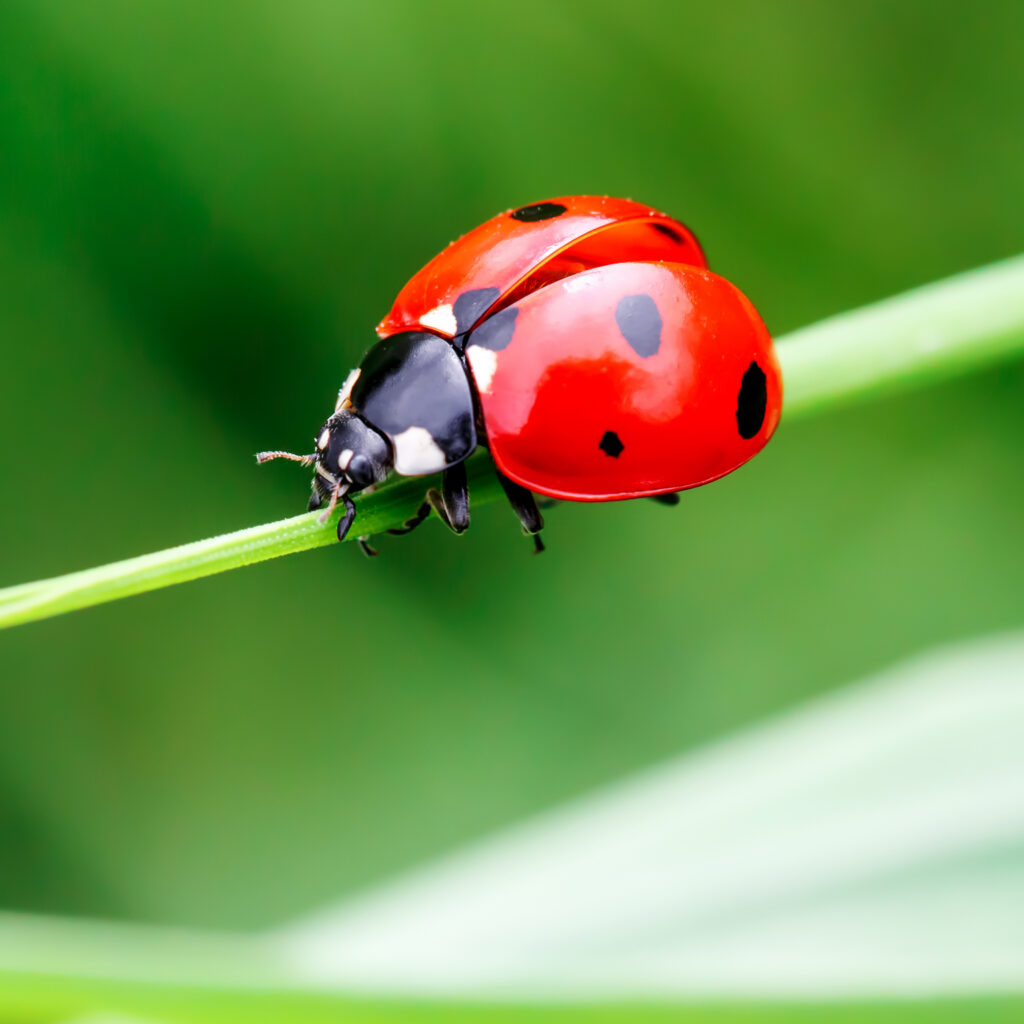
Oh look, a ladybug! So cute! …
Nearly everybody loves ladybugs. Many a poet has serenaded them in their poetry – even the Brothers Grimm. Ladybugs have even become one of the most important symbols of luck there is. What’s more, all gardening fans count themselves very lucky if these little guys feel at home in their plant paradise. That’s why, in German, they’re also known as “Glückskäfer”, or “lucky beetles”. Just as May beetles are out in May, ladybugs are out in June… some places in Germany even celebrate ladybug festivals! Read on to find out why this is, and to learn many more astonishing facts about these cute, spotty little creatures.
Small and red with black spots?
Whatever these lucky insects lack in size, they make up for with their prettiness and popularity. At just seven millimeters in length, ladybugs stand out because of their red color and the black spots on their semi-spherical bodies. But not so fast: not all ladybugs are red!
In fact, ladybugs come in different colors like yellow, red, brownish orange or black, with spots in another color. The number of spots depends on the species of ladybug. Seven-spot ladybugs are particularly common in Germany. They have three black spots on each of their wing cases, and the seventh in the middle of their back. Four little wings, six little legs and two feelers – and there you have it: a complete ladybug! By the way, only two of its wings – the thin ones – are used for flying. They are protected by two harder wing cases when the ladybug isn’t flying.
The seven-spot ladybug (coccinella semptempunctata) is found in several parts of the world, including Europe, Asia, North Africa and North America. You’ll find them in meadows, on the edges of forests, and of course in gardens. For some time now, however, these little guys have had to deal with fierce competition from Asia…
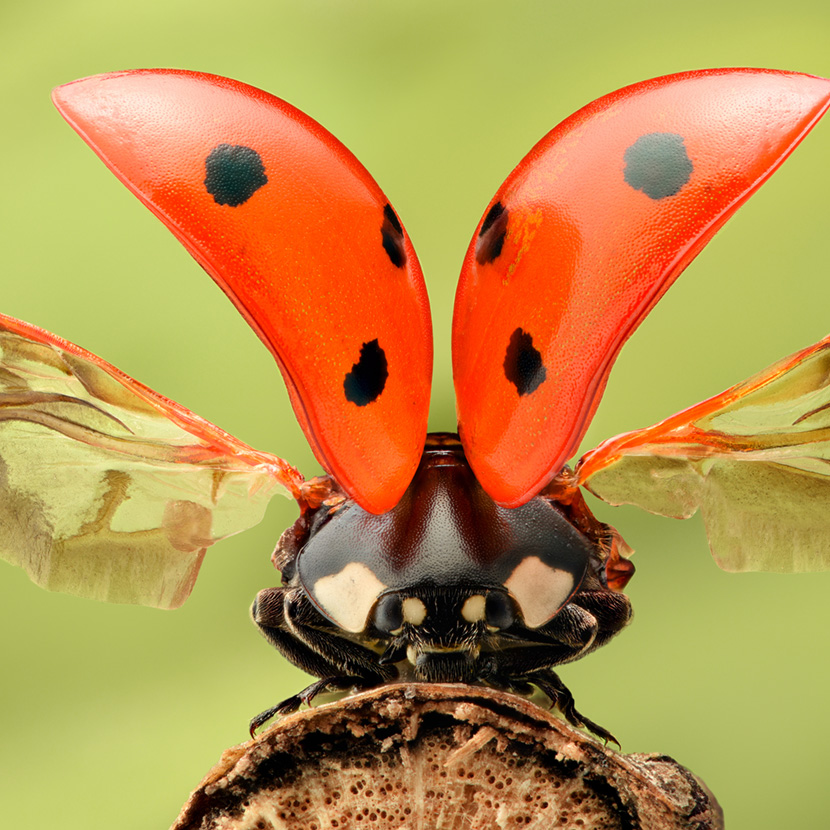
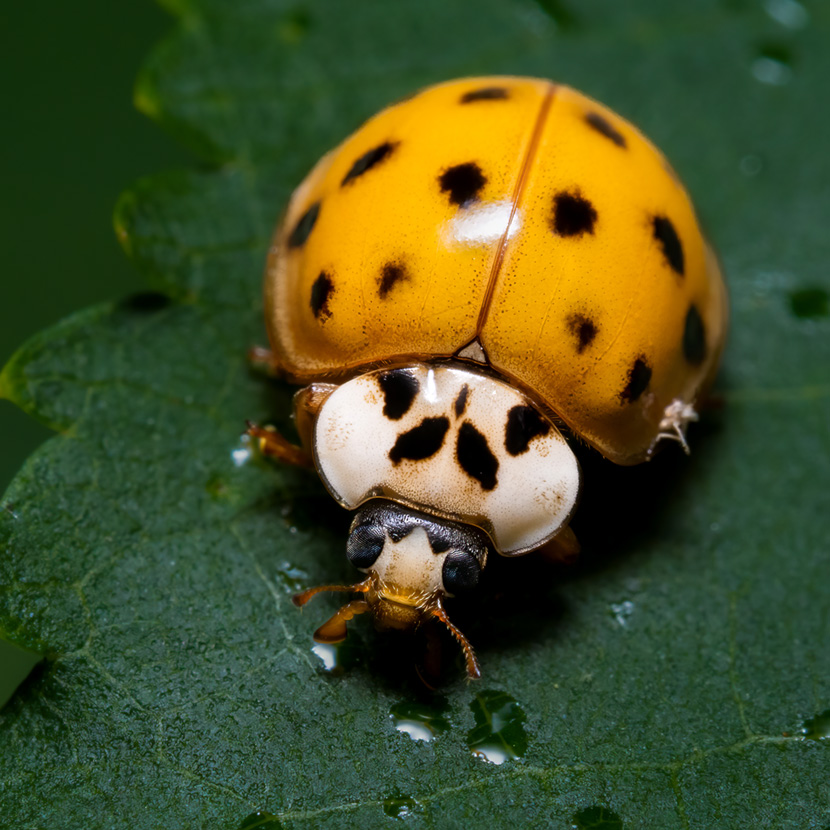
The very hungry ladybug
One well-known relative of our ladybugs is the Asian harlequin ladybug, which has coloring that can vary considerably – usually from light yellow to red, but sometimes all the way to black. They’re originally from Japan and China. The M-shaped pattern on their heads distinguish them from their native relatives.
Our native ladybug’s Asian cousins are known for their even more voracious appetites. That’s precisely why, since around the 1980s, people have used them to deal with aphids in European greenhouses. It would appear that a number of these ladybugs have managed to escape from the greenhouses, and have been reproducing rapidly in Europe and the USA since the 2000s. Who knows how the coexistence between the two ladybug species will play out?
Little ladybug helpers
Whether they’re native or imported, all ladybugs are useful. Adult ladybugs – and larvae, especially – have a huge appetite for aphids. However, they also eat spider mites, true bugs, thrips, and the larvae of beetles and sawflies. This means that these little helpers are very welcome guests in agriculture and market gardens.
When it gets cold in the fall, the ladybugs spend the winter in moss or piles of dead leaves. When it gets warmer again in the spring, they crawl out of their hiding places. When they’ve only just hatched, ladybug larvae are easy prey for larger insects or birds. As soon as the ladybug larvae hatch, they spend most of their time eating aphids and scale insects. When they grow, they shed their skins. This usually happens three times before they change into a chrysalis and become beautiful ladybugs. The adult bugs are hardly ever eaten by other animals, because when they feel like they’re in danger, they secrete a bitter-tasting liquid which deters their predators.
Humans make good use of the ladybugs’ “lousy” appetite for organic pest control. Asian ladybugs are also used to hot climates, and can have their hunger satisfied in greenhouses too. This makes the lucky ladybugs small but mighty helpers for fans of plants and gardening, and farmers around the world.
As long as farmers understand the need to preserve the biodiversity of the plants surrounding their fields, thus providing enough food for the ladybugs, then they can even reduce how much insecticide they use against lice. This is what the University of Würzburg found out as part of a long-term study: https://www.uni-wuerzburg.de/en/news-and-events/news/detail/news/natural-enemies-reduce-pesticide-use/
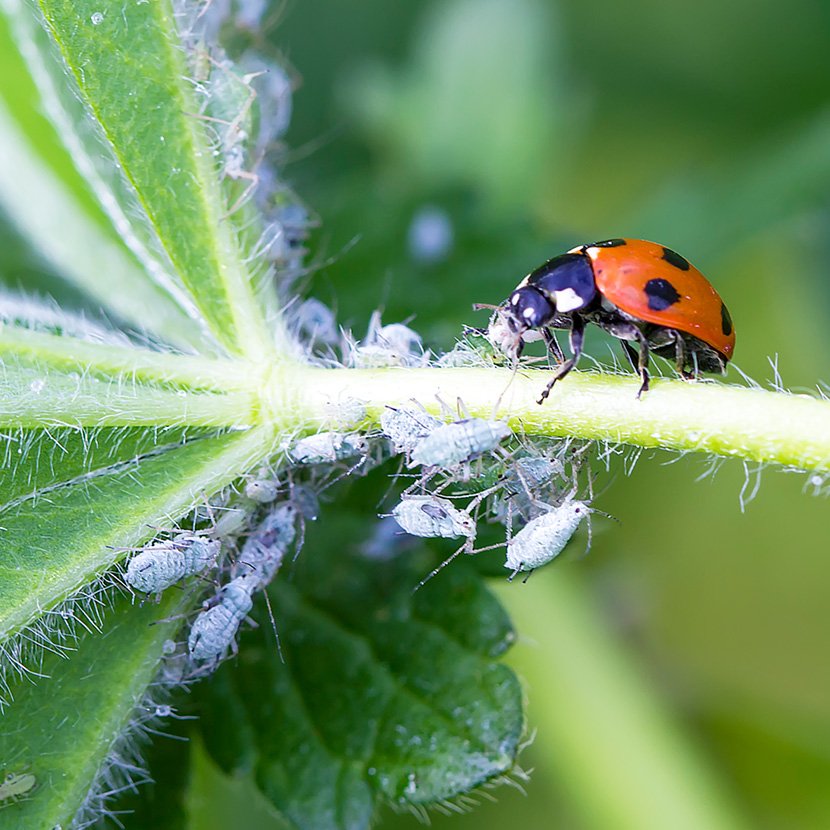
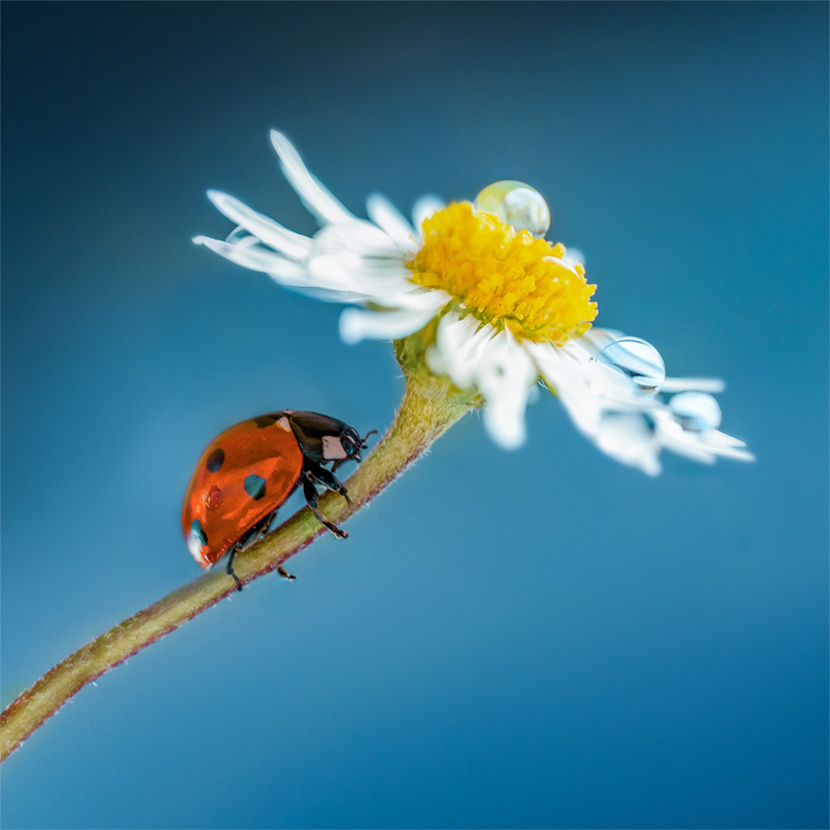
A winged lucky charm
Maybe you’re wondering why the seven-spot ladybug is thought to bring good luck. Well, the “lady” referred to in “ladybug” or “ladybird” is “Our Lady”, or the Virgin Mary. That’s why, in German, ladybugs are known as “Marienkäfer”, or “Mary’s beetles”. People believed it was the Virgin Mary who sent “useful” ladybugs to eat so-called “pests”, thus ensuring a good harvest. People then started to think that friendly ladybugs could protect them from a wide range of other ills, heal the sick, and protect children in particular. This also has to do with the fact they have seven spots – as the number seven has always been associated with luck in the context of mythology.
In Sweden, too (where they’re known as “Mary’s keymaids”), the pretty little critters are thought to bring good luck. And in the south of France, it’s thought that if a ladybug lands on a man, he’ll be getting married soon. Nowadays, ladybugs are to be found on many greetings cards and other items. But we still think nothing beats seeing them up close outside! And sometimes they even end up inside our homes!
Eight facts about ladybugs
1. Is it true that the number of spots a ladybug has tells you how many years old it is? No, this is a myth. Ladybugs usually live to be one year old. Some live to be two or three. The number of spots they have depends on their species only.
2. So, how many spots do they have? As its name suggests, the seven-spot ladybug, which is native to Europe, has seven spots. Other species have other numbers of spots, like the two-spot ladybug with two spots, or the 22-spot ladybug with 22. The names are pretty self-explanatory 😉
3. How many types of ladybug do you reckon there are in the world? Three, perhaps? Or five? Not even close! Germany alone is home to over 70 different species of ladybug, and worldwide there are around 5000 species!
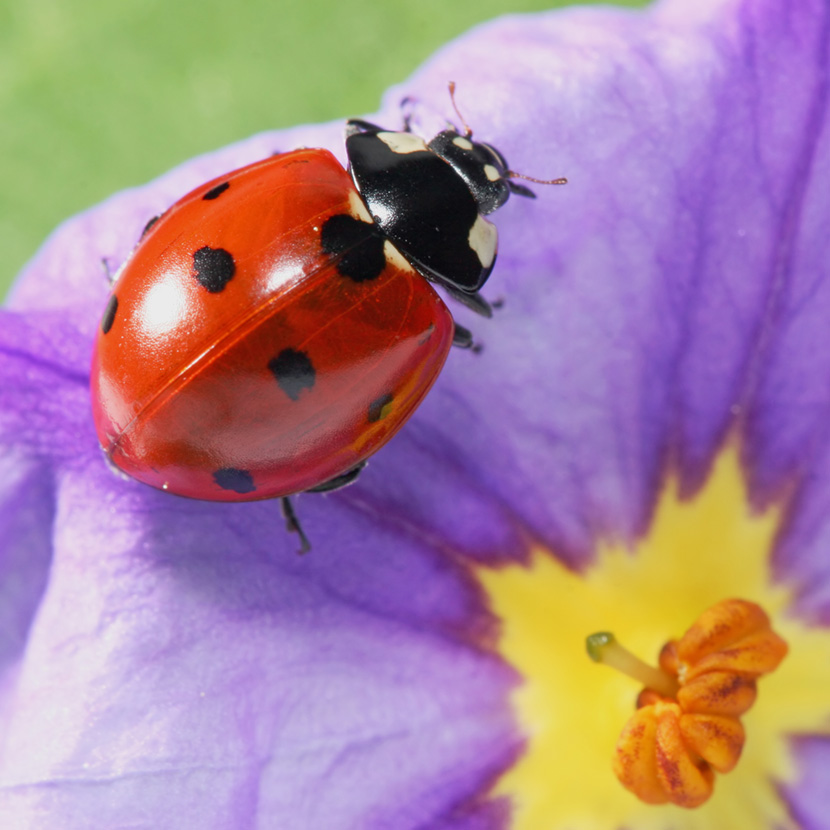
4. What is the ladybug’s superpower? There’s no doubt about it: gobbling aphid larvae is the ladybug’s superpower. While they’re developing, ladybug larvae eat around 400 aphids. During their entire lifetimes, ladybugs eat up to a whopping 5000 aphids.
5. Why are European ladybugs red? The color red gives off a signal. The ladybug uses it to warn its predators.
6. Did you know that ladybugs aren’t all that good at flying? Their bodies aren’t exactly aerodynamic. What’s more, their little legs mean they can’t manage more than a scurry. This doesn’t matter, though, as the aphids ladybugs eat aren’t great at defending themselves. However, aphids have somewhat more dangerous allies: ants. The ants defend “their” aphid friends against the ladybugs. That’s no problem, however: when it’s being attacked by an ant, the ladybug can protect its legs by hiding them under its wing cases. Now its body is smooth and round, and offers the ants hardly anywhere to attack. This makes it perfectly adapted – as we can observe with astonishment time and again in nature.
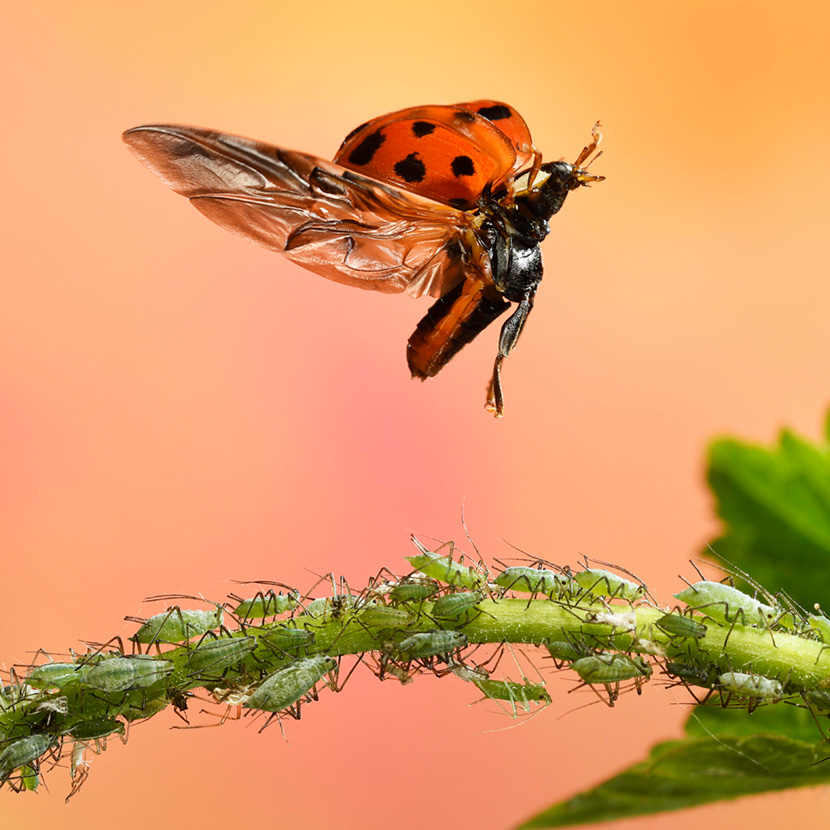
7. Are ladybugs loners? Yes and no. They sometimes appear in swarms. In the fall, they come together in swarms to look for a home for the winter. On the last sunny days of the year in our part of the world, they migrate to warmer, more southerly regions, or look for a good place to spend the winter here. These could include nooks and crannies in walls, other hollow spaces, or piles of leaves. That’s why they love gardens which are left as nature intended!
8. What are ladybugs not so fond of? Ladybugs don’t seem to be great fans of lavender, bay leaves or camphor. On the other hand, if you want to attract ladybugs, it makes sense to go for natural lawns with hedges, shrubs and wild herbs. They are particularly enamored with mint, cornflower and marigold. Ladybugs will thank you for it if you leave your green spaces as nature intended.
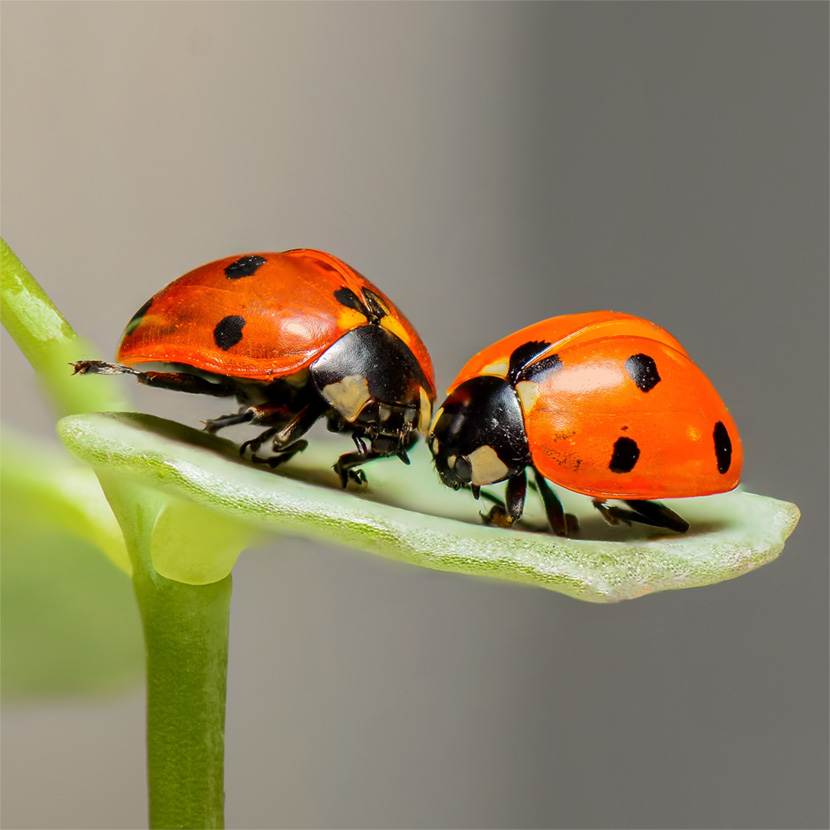
Maybe knowing these facts about the cute little insect will mean you’re even happier next time you’re out and about and see a ladybug or two. So make a wish, because we all know that ladybugs bring good luck!



